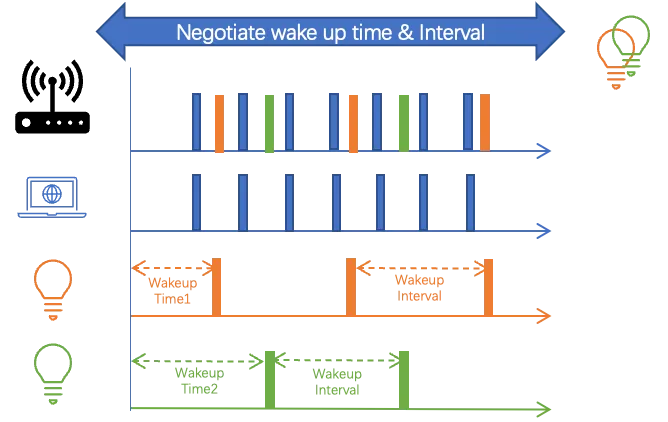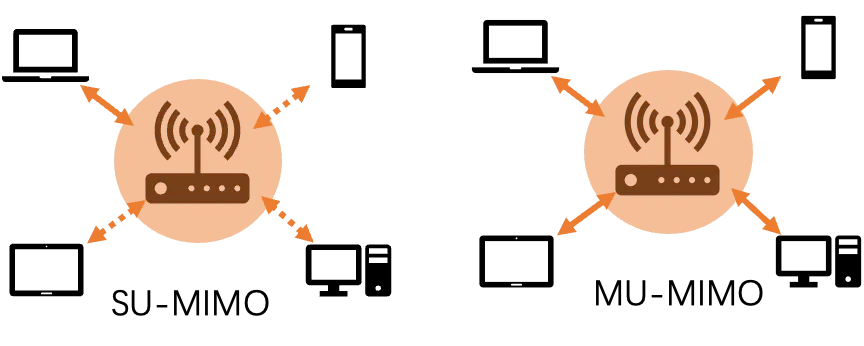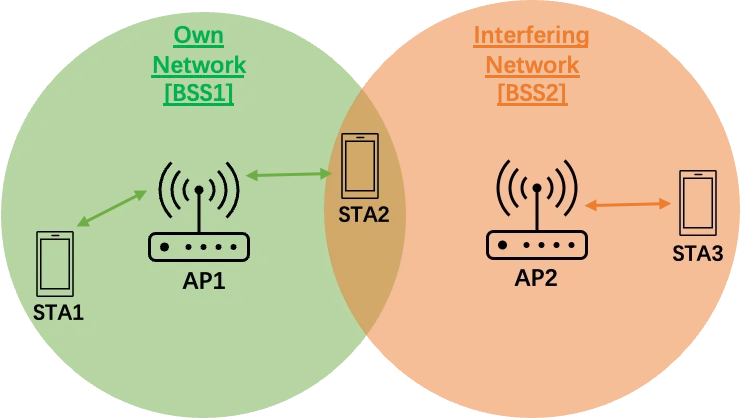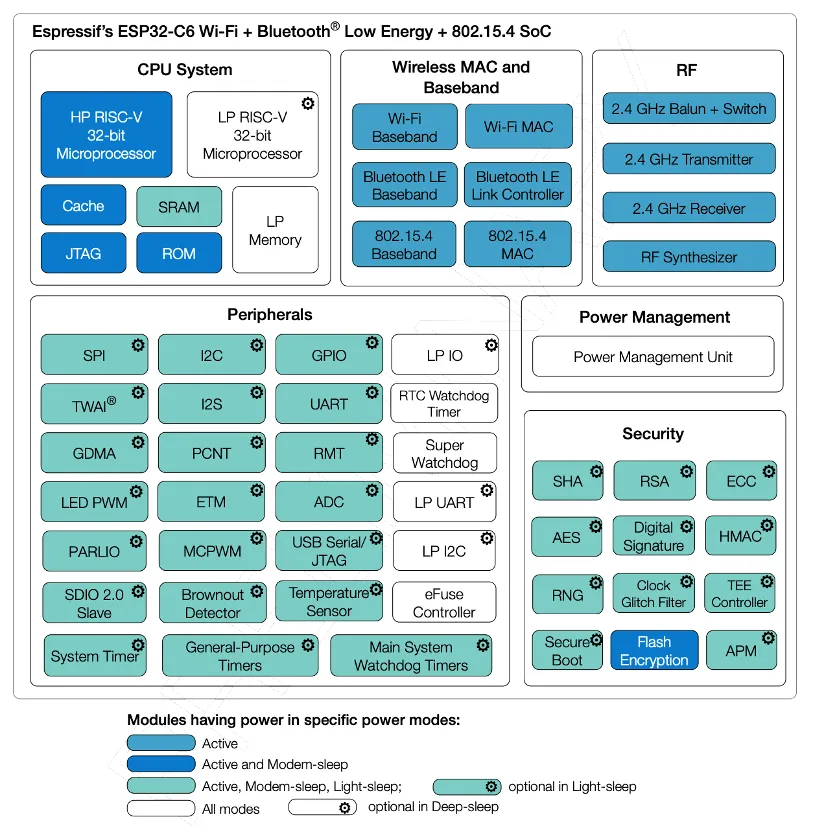In recent years, connected devices have become increasingly prevalent in our daily lives. From smart home devices to industrial automation systems, IoT technology is transforming the way we interact with the world around us. As IoT devices continue to proliferate, the need for reliable, high-capacity, and low-power wireless connectivity has become paramount. This is where Wi-Fi 6 (also known as 802.11ax) comes in, and its adoption in residential and enterprise settings reflects this need.
According to a report by the Wi-Fi Alliance , Wi-Fi 6 reached 50% market adoption more rapidly than any of the previous Wi-Fi generations. This was fuelled by the demand for high-quality Wi-Fi and more efficient, reliable connectivity [1]. Global tech market advisory firm ABI Research expects Wi-Fi 6 access points to increase from 9% of total Wi-Fi consumer premise equipment (CPE) shipments in 2020 to account for nearly 81% of the entire total Wi-Fi market in 2026 [2].

It is clear that the adoption rate for Wi-Fi 6 is on the rise, and it is the right time for new products to start utilizing the various features of 802.11ax that are incorporated into the specifications for various IoT applications.
To explain the impact of Wi-Fi 6 on IoT applications, it is essential to understand the different features introduced by Wi-Fi 6 and how they enhance network reliability, stability, and performance, enabling IoT applications to benefit from them.
Target Wake Time (TWT)#
Target Wake Time (TWT) is a feature of Wi-Fi 6 that allows devices to schedule when they will communicate with the wireless network. TWT lets a device turn on its radio interface only when it needs to communicate with the network, thereby reducing power consumption and extending the battery life of IoT devices.TWT works by allowing devices to negotiate a time slot with the access point for communication. This means that devices can plan when they need to wake up to communicate with the network, and the access point can plan its resources to accommodate the communication. TWT thus allows devices to stay in low-power modes for most of the time, which is especially important for battery-operated IoT devices that may not have access to a power source.

For IoT applications, TWT can enable the development of battery-operated Wi-Fi devices or sensors for certain applications that do not require fast response times. This feature can also be beneficial for IoT devices that only need to send small amounts of data at infrequent intervals. With TWT, these devices can operate with minimal power consumption, extending their battery life and reducing maintenance requirements.
Wi-Fi Protected Access 3 (WPA3)#
WPA3 is the latest security protocol for Wi-Fi networks, designed to address security weaknesses in WPA2. While it is available as an option for Wi-Fi 5 and earlier devices and routers, it is a mandatory requirement for Wi-Fi 6 certification by the Wi-Fi Alliance. This means that all Wi-Fi 6 devices must have WPA3 compatibility to obtain certification, ensuring that they meet the industry standard for security.

For IoT applications, the adoption of WPA3 provides several benefits. One is the ability to use QR codes for easy connection to Wi-Fi networks. With WPA3, devices can generate a QR code that can be scanned by a smartphone or tablet to easily connect to a Wi-Fi network. This simplifies the setup process and reduces the risk of errors or security vulnerabilities that can arise from manually entering network credentials.In addition to easy-connect features, WPA3 provides stronger security measures than previous protocols, including protection against offline password-guessing attacks, stronger encryption, and enhanced protection for public Wi-Fi networks. This is particularly important for IoT applications, where security is crucial to prevent unauthorized access or malicious attacks that can compromise the integrity of the system. Overall, the adoption of WPA3 in Wi-Fi 6 devices provides a more robust and secure platform for IoT applications to operate on.
MU-MIMO Downlink and Uplink (multi-user multiple input multiple output)#
MU-MIMO is a wireless technology that allows multiple devices to communicate simultaneously with a single access point (AP). MU-MIMO takes advantage of spatial separation to enable simultaneous communication with multiple devices. By using multiple antennas, the AP can create separate “beam-forming” paths toward different devices, enhancing signal strength and reducing interference. This is a significant improvement over SU-MIMO, which could communicate with only one device at a time. In a congested network where devices have to wait for their turn to communicate with the AP, there can be increased latency and potential timeouts. With MU-MIMO, the wait time is significantly reduced as devices can transmit and receive data concurrently, leading to improved responsiveness. With the support of MU-MIMO on 20MHz Channels as well as for 1SS devices, in Wi-Fi 6, IoT devices can also take advantage of this useful feature.

MU-MIMO can provide considerable benefits to IoT applications. MU-MIMO impacts the number of devices connected to a single AP by enabling simultaneous communication, utilizing spatial separation, and optimizing resource allocation. These factors collectively increase the network capacity, reduce delays, and enhance overall efficiency, allowing for a larger number of devices to stay connected while maintaining satisfactory performance. This is particularly important in residential and commercial environments with a good number of smart devices connected to the Wi-Fi network. In addition, MU-MIMO can help to reduce latency, which is important for applications that require real-time data transmission, such as industrial automation, security monitoring, and healthcare. With reduced latency, the overall performance and responsiveness of the network can be improved.
OFDMA (Orthogonal Frequency Division Multiple Access)#
OFDMA is a key feature of Wi-Fi 6 that improves the way data is transmitted between access points and multiple IoT devices. OFDMA divides the Wi-Fi channel into smaller sub-channels, known as resource units (RUs), and assigns each RU to a specific device or group of devices. This way, an AP can communicate with multiple devices simultaneously, and each device gets a fair share of the channel’s capacity.

With OFDMA, IoT devices can enjoy more consistent attention from the AP, as the resources are allocated more efficiently and predictably. This reduces the chances of packet loss and improves the throughput and overall performance of the network.Furthermore, OFDMA reduces the reliance on the contention methodology that was used in previous Wi-Fi standards, where devices would have to compete with each other for access to the channel. In contrast, OFDMA allows devices to receive their data without waiting for the transmission to other devices to finish. This results in less latency and better responsiveness for time-sensitive IoT applications, such as smart home devices, industrial automation, and healthcare applications.In summary, with this technology, IoT devices can enjoy a more stable and consistent connection, a higher density of device connections, and lower latency of communication.
BSS Coloring#
BSS coloring is a feature introduced in the 802.11ax Wi-Fi standard that helps reduce interference from neighboring access points (APs) and improve coexistence between multiple APs. The basic idea behind BSS coloring is that each BSS or AP uses a unique color (6-bit code) which is carried by the signal preamble or SIG field. The color allows client devices to differentiate between the signals of neighboring APs and avoid interference.In more technical terms, BSS coloring helps reduce co-channel interference (CCI) and adjacent-channel interference (ACI) between neighboring APs. With BSS coloring, each AP is assigned a unique color, which is added to the preamble of each transmitted packet. When a client device receives a packet, it can check the color of the received preamble and use this information to distinguish between the signals of different APs.

In dense IoT deployments or environments with a high concentration of devices and interfering Access Points, BSS coloring can be particularly beneficial. It helps prevent unnecessary retransmissions and collisions caused by neighboring networks, thus improving the overall network efficiency and potentially extending the usable range for IoT devices. Overall, BSS coloring is a useful feature in Wi-Fi 6 that helps improve network performance and reliability, particularly in environments with high AP density.
1024 QAM, 8 SS, 160MHz Band#
Other important features introduced in Wi-Fi 6 are focused on increasing the network bandwidth. For example, Wi-Fi 6 uses a higher modulation scheme of 1024 QAM compared to 256 QAM as used in previous generations. This translates to an encoding of 10-bit instead of 8-bit data thus increasing the overall bandwidth by 25%. Similarly, support for up to 8 parallel spacial streams and the addition of 160MHz channel bandwidth also increases the overall physical bandwidth of the network significantly. In general, such high data rates typically are not required for IoT applications. By increasing the available bandwidth and improving the efficiency of data transmission, these features can help ensure that the network can handle high traffic from multiple clients, including IoT devices, without experiencing slowdowns or congestion. This can be particularly important in dense IoT deployments or environments with high levels of network activity.
Espressif’s ESP32-C6 with Wi-Fi 6#
ESP32-C6 is Espressif’s first Wi-Fi 6 SoC integrating 2.4 GHz Wi-Fi 6, Bluetooth 5 (LE), and the 802.15.4 protocol. ESP32-C6 achieves an industry-leading RF performance, with reliable security features and multiple memory resources for IoT products. ESP32-C6 consists of a high-performance 32-bit RISC-V processor which can be clocked up to 160 MHz, and a low-power 32-bit RISC-V processor which can be clocked up to 20 MHz. ESP32-C6 has a 320KB ROM, and a 512KB SRAM, and works with external flash.

ESP32-C6 has an integrated 2.4 GHz Wi-Fi 6 (802.11ax) radio, which is backward compatible with the 802.11b/g/n standard. ESP32-C6 supports the OFDMA mechanism for both uplink and downlink communications, while also supporting MU-MIMO for downlink traffic. Both of these techniques allow working with high efficiency and low latency, even in congested wireless environments. Additionally, the Target Wake Time (TWT) feature of the 802.11ax standard enables ESP32-C6 customers to build battery-operated connected devices that can last for years, while staying connected throughout.
In conclusion, Wi-Fi 6 technology offers a range of features and capabilities that can help maximize IoT performance in various settings, from residential homes to large-scale enterprises. The improved capacity, range, and efficiency of Wi-Fi 6 can support the growing number of IoT devices and advanced applications that are increasingly common in today’s connected world. With the use of the Target Wake Time feature, it is now possible to build battery-operated Wi-Fi devices that are always connected.
Furthermore, the enhanced security features of Wi-Fi 6, including WPA3 certification, can help protect against potential security threats and ensure that sensitive data remains secure. As the adoption rate of Wi-Fi 6 technology continues to grow, more and more IoT devices and applications will likely rely on Wi-Fi 6 to deliver optimal performance and security.
Overall, understanding the implications of Wi-Fi 6 features and how they can impact IoT performance is crucial for anyone looking to maximize the potential of IoT technology. By staying up to date with the latest developments in Wi-Fi technology and adopting best practices for IoT connectivity, businesses and consumers alike can ensure that their IoT devices and applications perform at their best, both now and in the future.



